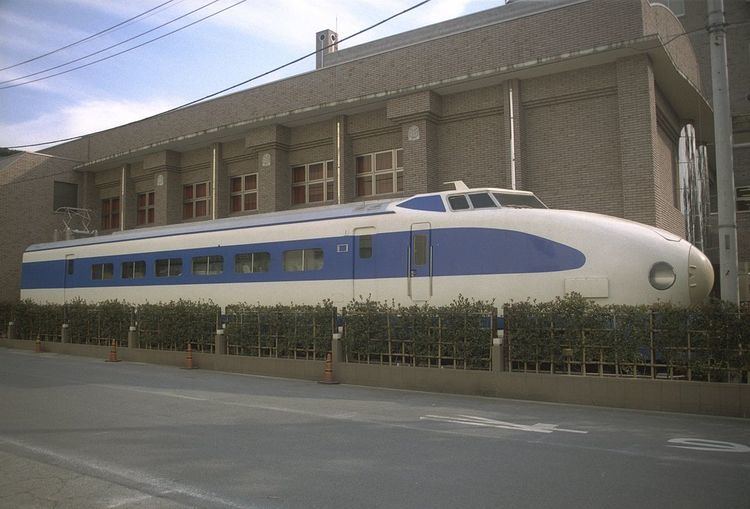In service 1969–1973 Scrapped 2008 Number preserved 1 | Constructed 1969 Number built 2 vehicles | |
 | ||
Manufacturer | ||
The Class 951 (951形) was an experimental Japanese Shinkansen train built to test the technology for future high-speed trains operating at speeds of up to 250 km/h (155 mph) following the opening of the Tokaido Shinkansen in 1964.
Contents
Formation
The Class 951 train was a two-car unit formed of cars numbered 951-1 and 951-2. Car 951-1 was built by Kawasaki Sharyo (present-day Kawasaki Heavy Industries), and had a seating capacity of 40 with seats arranged 3+2 abreast. Car 951-2 was built by Nippon Sharyo, and had a seating capacity of 50, also with seats arranged 3+2 abreast.
- 951-1 (Mc)
- 951-2 (M'c)
Both cars were fitted with a cross-arm type pantograph at the inner end. Both were based on the PS200 type used on the 0 Series Shinkansen trains, but the pantograph on car 951-1 was designated PS9010K, and that on car 951-2 was designated PS-1010A. Normally, only the pantograph on car 951-2 was used.
History
The train was unveiled to the press on 26 March 1969, with formal test running commencing on the Tōkaidō Shinkansen from 2 July 1969.
On 24 February 1972, the Class 951 recorded a world speed record of 286 km/h (178 mph) on the Sanyo Shinkansen between Himeji and Nishi-Akashi, breaking the previous record of 256 km/h (159 mph) set by the Class 1000 Shinkansen.
The train was formally withdrawn on 11 April 1980. Car 951-2 was transferred to the Railway Technical Research Institute in Kokubunji, Tokyo, where it was used for roller rig testing. Car 951-1 was donated to the nearby Hikari Plaza Community Centre in 1994, where it is open to the public. Car 951-2 was subsequently stored out of use inside the Railway Technical Research Institute, and was cut up in 2008.
